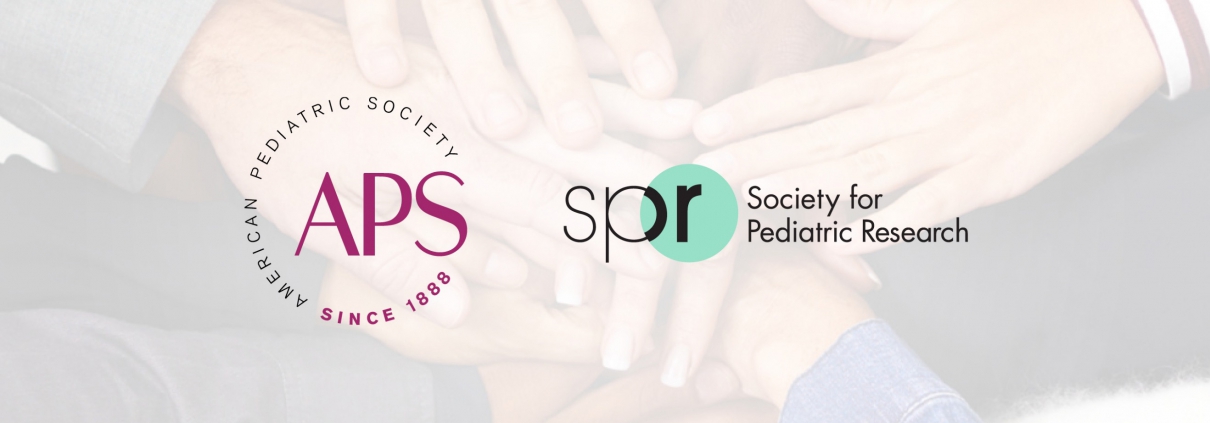Pediatric Policy Council Update
The APS and SPR are members of the Pediatric Policy Council (PPC) which actively advocates for children and academic pediatrics at the federal level. APS representatives to the PPC are Drs. DeWayne Pursley and Jonathan M. Davis; Drs. Joyce Javier and Shetal Shah represent the SPR.
The PPC also includes representatives from the Academic Pediatric Association (APA) and the Association of Medical School Pediatric Department Chairs (AMSPDC). The PPC is based in the Washington DC office of the American Academy of Pediatrics (AAP), who supplies staff and other support.
The latest advocacy developments are summarized by the PPC below
PPC CAPITOL CONNECTION
November 17, 2023
- The House of Representatives elected a new Speaker but passed a stopgap spending measure ahead of the November 17 government funding deadline to buy more time to negotiate full-year spending bills. More…
- The Special Supplemental Nutrition Program for Women, Infants, and Children (WIC) will need additional money to avoid benefits cuts and waitlists. More…
- The Health Resources and Services Administration made the first round of Pediatric Subspecialty Loan Repayment Program awards. More…
- Dr Monica Bertagnolli was approved by the Senate as the next Director of the National Institutes of Health. More…
- Find new funding opportunities, research findings, and more below. More…
- See what other developments we’re tracking with implications for child health advocacy. More…
- PPC members authored policy commentaries in Pediatric Research exploring the intersections of child health policy, advocacy, and pediatric research. More…
With a New Speaker in Place, Congress Punts on Full-Year Spending Bills Ahead of Deadline. After three weeks of infighting and recriminations, House Republicans elected Rep. Mike Johnson (R-La.) Speaker of the House of Representatives on October 25, allowing the lower chamber to resume its work on government funding legislation. With no clear path forward to resolve the significant differences between the House and Senate’s funding proposals before the November 17 deadline, however, Congress passed a short-term continuing resolution to avert a government shutdown yesterday.
Speaker Johnson’s election came after former House Speaker Kevin McCarthy (R-Calif.) was ousted from his post on October 3 by a majority of the chamber, the first sitting Speaker in US history to be unseated in the middle of his term. This historic moment was led by a small handful of members in the House Republican Conference who were outraged after McCarthy cut a deal with the White House to raise the debt ceiling in June and subsequently pass a 45-day continuing resolution with Democratic votes to keep the government open just hours before a shutdown on September 30. Dissatisfied with McCarthy’s failure to move forward their conservative funding vision, this small group of Republicans forced a no-confidence vote, made possible by a rules concession they won from McCarthy in January when they agreed to support his Speaker bid.
—CHALLENGES REMAIN TO FINALIZING FY24 SPENDING BILLS. Despite electing a new Speaker, the same underlying dynamics that required former Speaker McCarthy to buy himself extra time with a stopgap spending bill remain: thus-far irreconcilable differences between the Republican House’s drastic spending cuts on the one hand and the Senate and White House’s more measured government funding proposals on the other. Further complicating negotiations is the House’s decision to reject the discretionary spending caps agreed to on a bipartisan basis in June in the funding proposals it has prepared, which has made the Senate and White House unwilling to compromise on proposals that fail to adhere to the accord; the Senate’s proposed funding levels are in line with the agreement, which caps spending in Fiscal Year (FY) 2024 at current government funding levels.
The stark differences between the House and Senate’s proposals for National Institutes of Health (NIH) funding illustrate the chasm between the two chambers. The Senate has proposed a roughly $1 billion funding increase for the NIH, a modest but healthy increase for the NIH after years of multi-billion dollar plus-ups. In contrast, the House of Representatives would cut NIH funding by nearly $2.8 billion, including a $1.5 billion cut for the National Institute of Allergy and Infectious Diseases and a half billion dollar cut from the Office of the Director. As late as this week, the House of Representatives voted on amendments to their spending bill for the Department of Health and Human Services, cutting an additional $3.8 billion from the NIH on top of the cuts initially proposed. While there is some agreement between the two chambers—for instance, both would continue the Pediatric Subspecialty Loan Repayment Program at current funding levels—the major distance on big ticket items will be hard to resolve. Though none of the draconian cuts proposed in the House will become law because they will not be able to garner bipartisan support, it remains concerning that lawmakers have been willing to entertain such drastic proposals.
The continuing resolution passed yesterday keeps some federal agencies open until January 19 and others, including the Department of Health and Human Serviecs, open through February 2. It’s important to note that the reliance on short-term continuing resolutions to keep the government open places crucial programs that children and families rely upon on precarious footing, including essential child nutrition programs. And stopgap funding measures make it harder for agencies like the NIH to plan their programmatic work and create significant uncertainty as to how much funding they will have available to award grants. This is to say nothing of a government shutdown, which would have dramatic ramifications for the federal government and the American people. The NIH has more on what a government shutdown would mean for the agency’s operations, which demonstrates the many difficult choices federal agencies must make when federal appropriations lapse.
CONGRESSIONAL ACTION NEEDED TO INCREASE FUNDING FOR WIC. The Special Supplemental Nutrition Program for Women, Infants, and Children (WIC) program is facing cuts to funding at a time when enrollment and eligibility have both increased significantly and food costs have increased due to inflation. The Biden Administration submitted a supplemental funding request to Congress to cover the additional need. Without additional funding, the program would have to resort to cutting benefits or implementing waitlists.
Unfortunately, the continuing resolution passed yesterday does not include any supplemental funding for the Special Supplemental Nutrition Program for Women, Infants, and Children (WIC) program. Since there was no additional funding included for the WIC program in this agreement, it is still critical for lawmakers to hear about the need for this additional funding in order to avoid potential waitlists or cuts to benefits.
Pediatric Subspecialty Loan Repayment Program Makes First Round of Awards. After over a decade of advocacy from the Pediatric Policy Council, the Health Resources and Services Administration (HRSA) has completed the process of funding applicants for the first year of the Pediatric Subspecialty Loan Repayment Program, awarding loan repayment to roughly 120 individuals.
Awardees must commit to serving an underserved area for three years. The program is available for both fellowship trainees and those who have completed fellowship. Visit HRSA’s website to learn more.
The PPC is monitoring the implementation of PSLRP closely and is aware of challenges that have made it difficult for pediatric subspecialists to qualify for the program. Specifically, HRSA’s requirement that PSLRP recipients provide 36 hours of direct patient care per week is a significant barrier that will make it very difficult for most pediatric subspecialty fellows and practicing subspecialists to qualify. This HRSA-imposed requirement is not required by the law for which the PPC long advocated and is incompatible with the nature of pediatric subspecialty training and practice at large academic medical centers. The PPC will be advocating to ensure that this and other implementation issues are addressed so that as many pediatric subspecialists as possible can qualify.
The launch of PSLRP was made possible by the advocacy of pediatric subspecialists and academicians, which resulted in Congress providing funding for the program in the two most recent annual spending bills. In FY 2022, the PPC secured $5 million for PSLRP and subsequently secured an additional $10 million in the FY 2023 spending bill. Together, this funding gave HRSA $15 million, which allowed it to fund more slots than initially anticipated with the original $5 million investment. The PPC is calling on Congress to increase funding for PSLRP in FY 2024.
Senate Clears Biden’s NIH Nominee. The Senate approved President Biden’s nominee to lead the NIH last week 62 to 36, nearly two years after Francis Collins, MD, PhD, stepped down as NIH director. Dr Bertagnolli is a world-renowned oncologist and former head of the National Cancer Institute, and her nomination was praised widely by members of the biomedical research community, including former NIH directors.
Senate consideration of her nomination stalled over disagreements between Sen. Bernie Sanders (I-Vt.), the chair of the Senate Health, Education, Labor & Pensions Committee responsible for vetting her nomination, and the White House about drug pricing efforts. Sen. Sanders pushed for aggressive unilateral action from the Biden administration to lower the cost of prescription drugs and had refused to consider any of Biden’s health nominees without assurances that the administration was taking action. He finally relented after the federal government required a biotech company developing a monoclonal antibody treatment for COVID-19 with public money to price the therapy at a level equal to or less than the price in other major countries.
Dr. Bertagnolli will now be tasked with leading an agency facing potential budget cuts and a battered reputation among some members of Congress who questioned the agency’s role in the COVID-19 pandemic.
Key Research Updates FROM NIH
- Reducing Ableism in Medicine and Research, November 1, 2023
- Digital autism screening tool shows promise in NIH-funded study, October 2, 2023
- Addressing the Tragedy of Stillbirth, September 29, 2023
- NIH designates people with disabilities as a population with health disparities, September 26, 2023
- ARPA-H announces site selections by launching nationwide health innovation network, September 26, 2023
- NIH and partners launch public-private effort to advance pediatric medical device development, September 26, 2023
- Research Highlights from the NICHD Division of Intramural Research (DIR), September 8, 2023
- Pediatrician Catherine Gordon appointed director of NICHD’s clinical research program, September 6, 2023
- Addressing the Health Effects of Climate Change, September 5, 2023
- NIH launches long COVID clinical trials through RECOVER Initiative, opening enrollment, July 31, 2023
What We’re Reading
PPC POLICY COMMENTARIES. Members of the PPC have authored commentaries detailing the policy implications of research published in Pediatric Research. You can read these PPC-authored commentaries online:
- Hydrocortisone may spare head growth, but the debate for steroid use rages on by Drs Hellen Ko, Ashwini Lakshmanan, and Jessie Maxwell, October 16, 2023
- “Medi-Mom”: maternal mortality and extending postpartum Medicaid coverage by Dr Shetal Shah, July 22, 2023
- Tech-equity in pediatric primary care: applying pandemic lessons in a post-public health emergency state by Dr Erin Paquette, June 29, 2023
- Pediatric subspecialty pipeline: aligning care needs with a changing pediatric health care delivery environment by Drs Mona Patel and Jean Raphael, May 4, 2023

